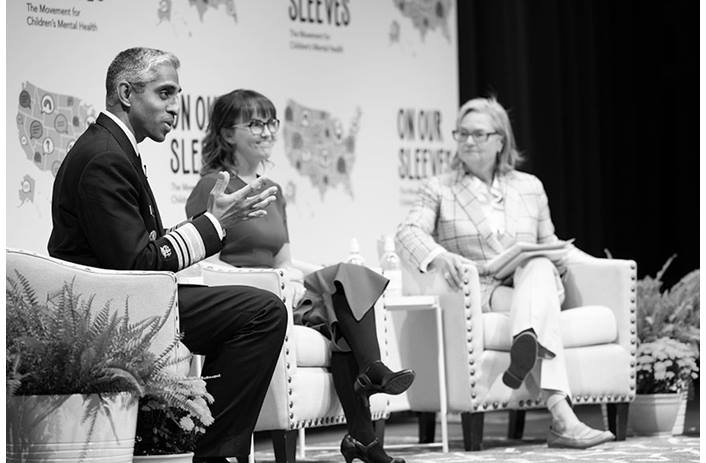The Surgeon General’s 3 Crucial Youth Mental Health Stats

In a visit to Nationwide Children’s Hospital and Otterbein University on Oct. 18, U.S. Surgeon General Vivek Murthy, MD, said he likes to start conversations on youth mental health with three numbers:
- 57. That’s the percentage increase in the suicide rate among young people in the United States in the decade before COVID-19.
- 44. That’s the percentage of American high school students who feel persistently sad or hopeless right now.
- 11. That’s the average number of years between a child’s first symptoms of a mental health issue and when they actually receive treatment.
“Combine these numbers with the stories we hear all across the country, and it’s clear we’re in crisis,” said Dr. Murthy.
It’s not just children who feel the impact. Their families and communities do too, and everyone has a role to play in addressing the crisis, he said.
Over the last two decades, Nationwide Children’s increasingly has been working toward that goal – suicide prevention programs in schools; the construction of the largest pediatric research and treatment facility of its kind in the country, the Big Lots Behavioral Health Pavilion; the launch of the national stigma-breaking movement, On Our Sleeves®; and much more.
And as Tim Robinson, Nationwide Children’s CEO, said during the Surgeon General’s visit, “no one has done more to elevate this issue to a national priority” than Dr. Murthy.
Dr. Murthy’s visit to the hospital and Otterbein on Oct. 18 gave him, Nationwide Children’s leaders and central Ohio students an opportunity to talk about the crisis and future opportunities to address it.
Along with touring the Behavioral Health Pavilion and meeting mental health care workers at Nationwide Children’s, Dr. Murthy participated in a luncheon panel discussion in front dozens of local business leaders on the effect of children’s mental health on the workforce.
Vinita Clements, chief human resources officer at Nationwide, and Marti Bledsoe Post, executive director of On Our Sleeves, were part of the panel as well. On Our Sleeves’ 2022 survey of child mental health impact on the work force, called The Great Collide, brought attention to this underrecognized problem.
“There used to be an idea that when people come to work, they check all of their personal experiences and baggage at the door, and then they do the same when they go back home,” said Dr. Murthy during the panel discussion. “We have learned that it doesn’t work that way. If our child isn’t feeling well, it’s going to show up in how we participate in a meeting. If work is stressful in a given day, that impacts how we show up for our family, our friends and our community outside of work.”
In addition to his Surgeon General’s Advisory on Youth Mental Health, Dr. Murthy just released a new Surgeon General’s Framework on Mental Health and Well-Being at Work that provides recommendations for workplaces to better support their employees at and outside of work.
At Otterbein, Dr. Murthy spoke on a panel with Ariana Hoet, PhD, clinical director of On Our Sleeves, and Ann Fisher, host of WOSU radio’s All Sides program. With the students, the panelists focused on the need to break stigmas and be more open with the idea that many people experience mental health struggles.
“We know it’s important to talk about it, but how do I do it?” said Dr. Hoet. “That’s what we’re working on at On Our Sleeves. Starting the conversation. How do I get someone to engage so that they don’t just say, “I’m fine?”
On Our Sleeves has resources for children, families and employers about how to start those conversations and keep them going. Visit the website here and download The Great Collide report about the impact of child mental health on the workplace.



